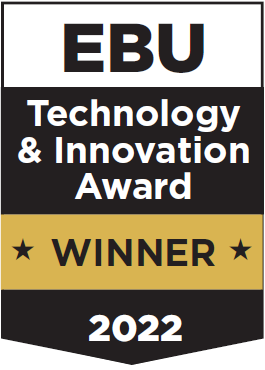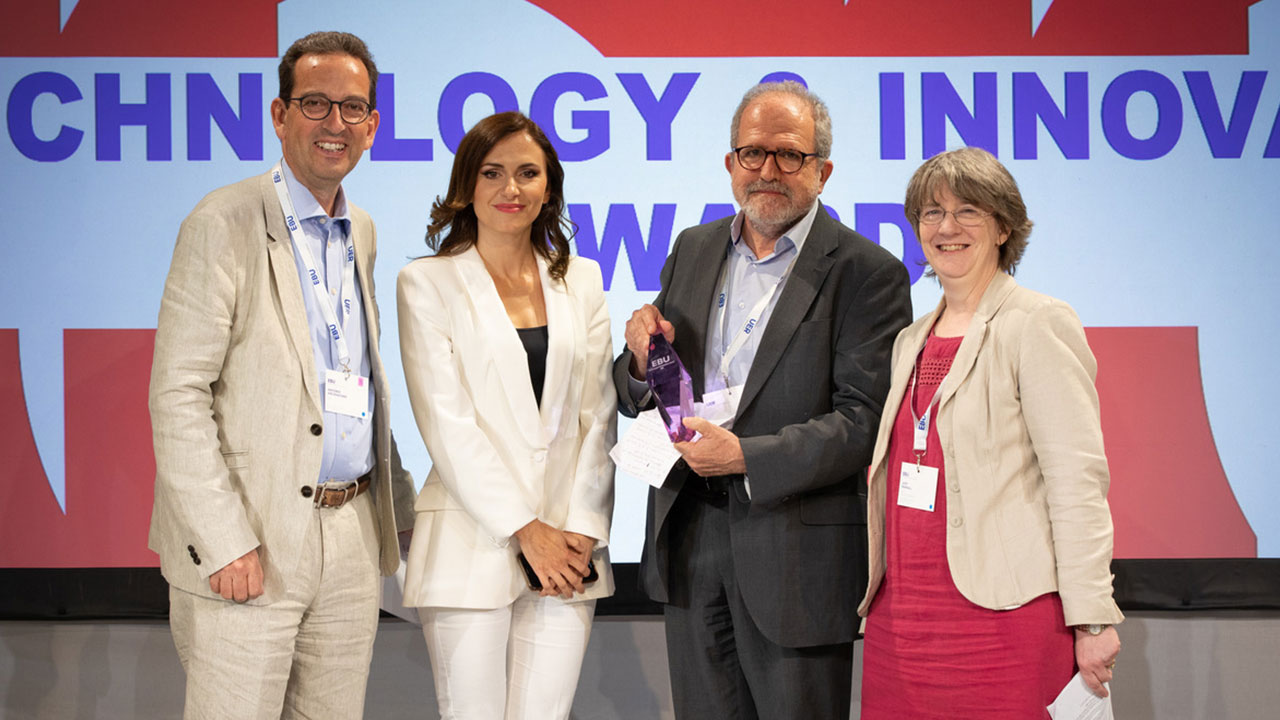
 Pere Vila, Director of Technological Strategy, RTVE
Pere Vila, Director of Technological Strategy, RTVE
We were convinced that the arrival of 5G technology could help us to effectively and efficiently improve three very important aspects of television production: having permanently connected cameras, being able to make multi-camera productions in the cloud (or on the edge), and implementing new forms of broadcasting, capable of making an impact on new devices (smartphones, tablets) and enabling new forms of digital consumption.
Connected cameras
Although we are used to perceiving the camera as a device that not only captures but also stores the image, our business need is somewhat different. Once the image has been captured, what really gives it value is having this image available in the editorial suite and not only in the camera’s memory.
The possibility of equipping our cameras with a means of being permanently connected, providing our editorial teams with immediate access to the images captured, creates enticing new possibilities for our news and current affairs departments.
Our interest led us to carry out one of the world’s first live television connections using a standalone 5G network (5G SA); this was in Valencia in 2019. 5G SA allows the creation of a network that is independent of the cellular network used by the public. Additionally, such a network can be segmented into sub-networks with different transmission capacities, speeds and latencies. We also installed a permanent 5G small cell, known as a small area wireless access point (SAWAP), in the regional parliament of Castilla–La Mancha and used it to deliver the first productions using the network- slicing possibilities offered by 5G technology. Network slicing is an architecture that allows the creation of independent virtualized logical networks that all use the same physical network infrastructure.
An added benefit of leveraging technology and infrastructures that are closely linked to mobile telephony is the possibility of being able to use images captured by smartphones to complement and support the professional cameras. And this is not only for capturing, but also for editing, sending and being able to offer the first images or live connections while awaiting the arrival of the professional media, which is essential in those cases where immediacy is a priority.
Multi-camera productions
The fact that 5G systems make it possible to process data in the cloud or at the edge (i.e. as close as possible to where the data is captured) allowed us to create simple multi-camera productions. These were based on the deployment of remote cameras, connected back to the control room at our studios, and the use of cloud-based servers with video mixing functions.
This use case, with which we had already experimented using 4G technology during the Manga Fair in Barcelona in 2018, becomes truly viable with the advent of 5G. Thus, in November 2019 we made a multi-camera production of an event in the Madrid offices of the European Parliament. For this we used a 5G deployment intended primarily for mobile telephony.
This was the first successful test of a series of 5G-based productions that we accomplished with the help of the RTVE Territorial Centre of Toledo and our colleagues from Radio 3. We also made the first productions deploying audiovisual services on servers at the edge of telecommunications networks, again in Madrid.
New forms of delivery
The mobile phone is a device that practically the entire population owns and uses constantly. The possibility of offering our broadcast television and radio content to these devices in broadcast form is not a trivial idea and is one that we also wanted to explore. We are aware of the IP access possibilities of smartphones and how easy it is to download and store films or entertainment content. This is why we wanted to experiment with public service channels with a high incidence of current affairs or information.
It is with this concept that we carried out different broadcasting tests, in this instance in Barcelona, coinciding with the Mobile World Congress in 2022. We did this with companies like Cellnex, Cires21 and Rohde & Schwarz for the broadcast network and with smartphones equipped with a Qualcomm chipset. The 5G Broadcast solution is based on the feature set of the 3GPP Rel-16 standard and operates in receive- only (ROM), free-to-air (FTA) and SIM-free modes. The dedicated 5G Broadcast mode was demonstrated with a low-power, low-tower infrastructure operating within the UHF band. The content came from our 24-hour television news channels and Radio 5, as well as La 1 television and Radio 1.
The results of these tests were also positive, leading us to think about the possibility of taking advantage of the deployment of 5G to strengthen the broadcasting of public content – both radio and television – linked to current affairs or information so that it can be present on our smartphones.

RTVE's 5G projects won the EBU Technology & Innovation Award 2022. Pictured above are Christina Bravo and Pere Vila representing the winning team from RTVE, with EBU T&I Director Antonio Arcidiacono and outgoing Technical Committee Chair Judy Parnall
Project partners
In order to carry out this set of initiatives and projects, whether for the tests of permanently connected cameras, the multi-camera productions in the cloud (or on the edge) and the new forms of broadcasting, RTVE has relied on specific, multidisciplinary teams, giving special prominence to our territorial centres such as those of Castilla–La Mancha and Toledo.
It has also been considered as an open process, in which several companies and organizations have been involved, including RED.es, TVU, Castilla–La Mancha Parliament, Dolby, Sony, Watchity, Vodafone, Telefónica, Cellnex, Cires21, Rohde & Schwarz, Qualcomm, Telecom CLM, the University of Valencia, the Polytechnic University of Madrid, and the Almagro International Classical Theatre Festival.
Although the project was tough at times, the total commitment of this group of companies and entities must be highlighted here, in an atmosphere of frank collaboration and professional growth for our sector.
More to be done
This process does not end here, and there are four lines of work on which we continue to advance:
- To consolidate and finish reinforcing the services with the incorporation of network slicing, improvements in practical aspects of production linked to intercom, signalling, coordination, and orders. We must also observe if and when the commercialization of smartphones with chipsets to receive 5G broadcast takes place.
- To gradually deploy these services in our companies as a complement to the current infrastructure, always benefitting from both worlds and keeping an eye on cultural aspects.
- To initiate tests to incorporate UHD into the scope of our work on 5G. To explore the possibilities of capturing and sending UHD signals over 5G infrastructures and to deploy UHD production tools in the cloud or on the edge.
- To incorporate artificial intelligence processes applied to production on the edge, with services such as semi-skimmed production, automatic metadata enrichment, etc.
In our opinion, public companies such as RTVE must commit time and resources to the incorporation of these new technologies in our work, even though our public structure, size and territorial deployment make such commitments more complex. The only way to overcome these complexities is to apply innovation.
I would like to end this article by thanking the EBU and our colleagues across the EBU membership, professionals who are our reference and who we value very highly for the recognition they have given us. We are doing a job that we like very much and that enables us to work alongside excellent companies and entities in our sector.
This article was first published in issue 53 of tech-i magazine.
